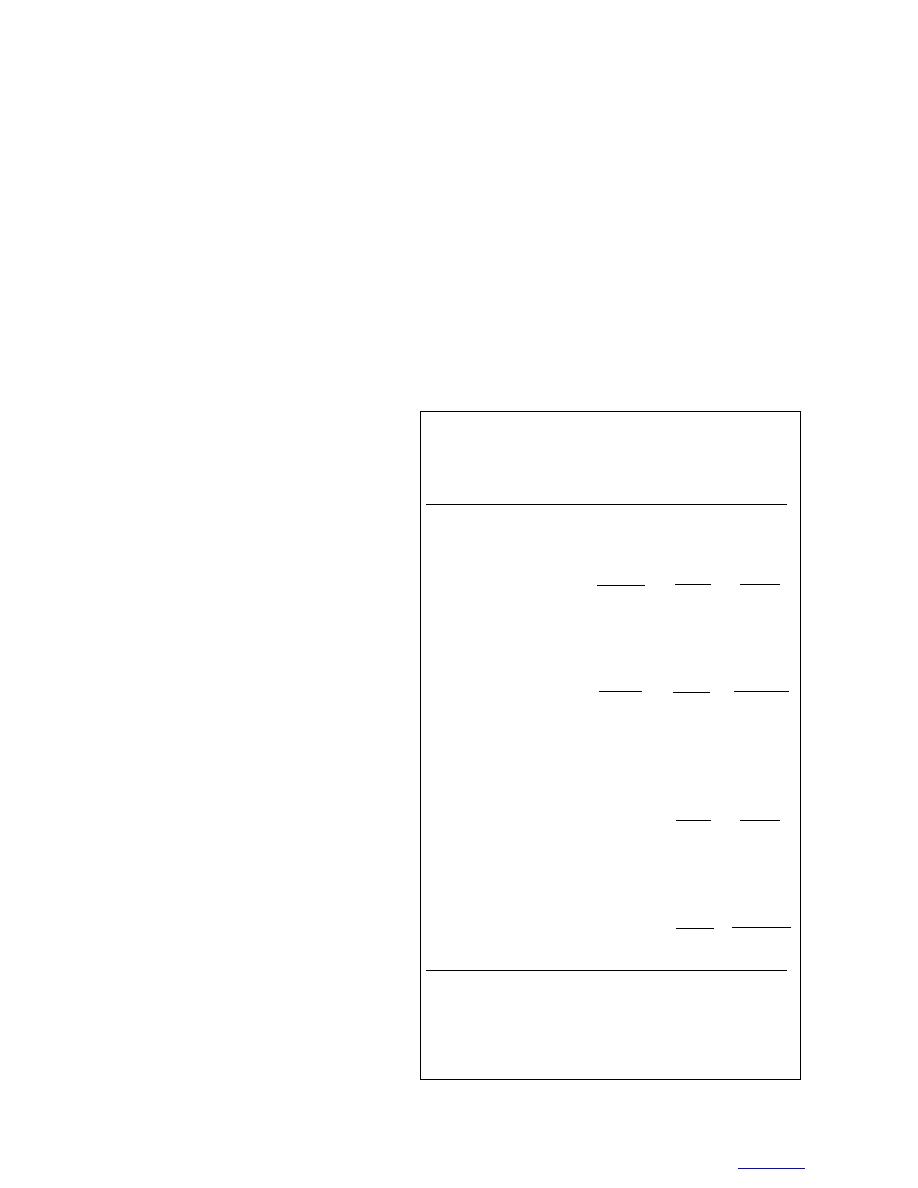
onstration has been presented elsewhere (Hewitt 2000).
the same stock standard that was used for spiking the lab-
The field sampling was collaboratively designed to
oratory and field matrix samples was used to prepare the
ensure that 1) the number and type of samples could be
calibration standards. The PE samples (Table 4) were
processed in the time allotted, and, more importantly,
quantified against commercial reference standards.
2) that, during the collection and handling of the samples,
they would not be compromised. This second objective
RESULTS
applies to how representative the samples would be of
Laboratory study
the in-situ conditions, and to potential sources of deter-
minant error that would compromise the comparison
Tables 4 through 8 show the results of the HM 2000
between the different methods of preparation and analy-
laboratory trials. The values reported in these tables,
sis. In general, the procedures used for this field exer-
and all of the others covering the field trials, are based
cise were similar to the laboratory procedures described
on moist weight for the soil samples, and were rounded
previously.
to two significant figures or less. A single significant
At least one replicate of each sample was sent for
figure was reported when the value was limited by the
reference laboratory analysis. The primary reference
instrumental display of the HM 2000 or by the concen-
laboratory used for this field demonstration, which was
trations provided with the visual comparison chart.
the only laboratory to be sent an entire set of rep-
licate samples, failed to produce reliable results
Table 4. Concentration estimates (mg/kg) of total petro-
(Hewitt 2000). For this reason only QA samples,
leum hydrocarbons (TPH) for performance evaluation soil
standards analyzed during the laboratory trials.
and those field samples analyzed at CRREL, will
be discussed. The QA samples used for field study
Catalog /
Certified
were composed of PE samples, matrix spike sam-
lot numbers
concentration
CRREL
Visual
HM 2000
ples, and field sample duplicates (App. A, Tables
a. Gasoline
A1 to A5). Three different types of petroleum
763/40016
510
460
200
380
contamination--gasoline, diesel/bunker C fuel,
763/40016
510
400
200
330
763/40016
510
430
200
300
and motor oil (i.e., residual)--were examined.
763/40016
510
450
200
370
Replicates of all the field and QA samples with
44026*
34037
200
gasoline contamination were returned to CRREL
(86%)†
(39%)
(67%)
for analysis using a reference method.
[6%]**
[11%]
600††
1400††
763/40020
1130
960
600††
1900††
763/40020
1130
1000
Reference analysis method
600††
1600††
763/40020
1130
1000
For both the laboratory and field trials, repli-
600††
2000††
763/40020
1130
1000
cates of each sample contaminated with gaso-
99020
1700270
600
line were analyzed at CRREL. The sample prepa-
(88%)
(53%)
(150%)
[2%]
[16%]
ration and quantification procedure used was con-
sistent with U.S. EPA Method 5021/8021, which
b. Diesel
is a headspace (HS) sample introduction system
765/40018
401
250
600
765/40018
401
250
630
coupled to a gas chromatograph (GC) equipped
765/40018
401
250
660
with a photo ionization detector (USEPA 1986).
765/40018
401
250
580
The instrumentation used was a Tekmar 7000 au-
62035
250
tomated HS system, coupled to a SRI model 8610-
(62%)
(130%)
[5.6%]
0058 GC. The instrumental settings were consis-
tent with what has been previously reported (Hewitt
2600‡
765/40017
1730
1000‡
2600‡
765/40017
1730
1000‡
1995).
4100‡
765/40017
1730
1000‡
Soil samples were extracted with MeOH, and
4000‡
765/40017
1730
1000‡
a small (less than 0.2 mL) aliquot of this extract
3300840
1000
was transferred to 10 mL of organic free water
(58%)
(190%)
[25%]
saturated with sodium chloride for HS/GC analy-
sis. Water samples were run directly by transfer-
* Average and standard deviation.
†
Percent recovery relative to the certified concentration.
ring 0.5 to 10 mL into an analysis VOA vial that
** Relative standard deviation.
contained the appropriate volume of organic free
†† Extract diluted 2.5 mL to 5.0 mL (2) for visual and MH 2000
water to bring the final volume to 10 mL. To elim-
analysis.
‡ Extract diluted 1.0 mL to 5.0 mL (5) for visual and MH 2000
inate variations that exist among different sources
analysis.
of petroleum products and commercial standards,
5



 Previous Page
Previous Page
